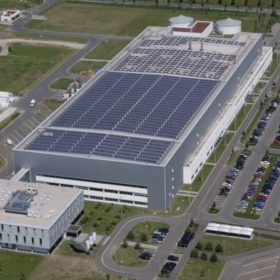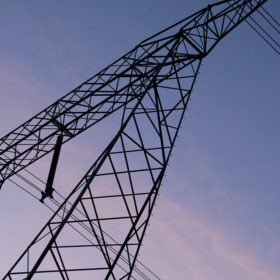Pacific island nation re-tenders big solar-plus-storage project
An initial tender on Palau was won by French energy company Engie, through its unit Engie Electro Power Systems. The 100 MW microgrid project consisted of coupling 35 MW of solar and 45 MWh of storage with diesel generation.
The Windy – or maybe that should be nuclear – City will go 100% renewable
Chicago may be the largest city in the U.S. to commit to 100% renewable energy and has set a 2035 target date. The famous city’s long association with nuclear power says a lot about the future of clean energy Statesside.
Chint’s 103 MW Dutch solar park will use Astronergy panels
Chinese module maker announces start of construction on big project in the Netherlands weeks after announcing production of solar panels at its German Astronergy unit would be halted.
India a $50bn market for energy storage, says US energy firm chief
Given its ambitious goal of achieving 175 GW of renewable power generation capacity by 2022 – and push for electric mobility – the world’s second most populous nation presents a potentially huge investment opportunity.
Rising Nordic power prices lifted Statkraft’s fourth-quarter results
The Norwegian renewable energy company cited rising prices, cost reduction plans and lucrative transactions as the main reason for its positive update. The average Nordic energy price in the quarter was €47.7/MWh, an increase of 56% from the same period a year earlier.
India gets first grid-scale battery energy storage system
The 10 MW system at Tata Power Delhi Distribution’s Rohini substation is said to be South Asia’s largest.
Solar, wind and storage can provide seven key grid services
Former NREL employee pens paper to rebut claims conventional energy can supply the essential grid services needed to return to normality after network disruption. The author says claims renewable energy cannot provide such services are erroneous.
Vietnam mulls multi-layered FIT scheme as it kicks energy transition into gear
With its feed-in tariff set to expire at the end of June, Vietnam is considering different levels of payment, classified across three irradiation regions and involving four solar technologies. Future payments would range from $0.0659-0.0985/kWh, with the cloudy north in line for the highest tariffs and with the government likely to revise tariffs for new projects every two years.
South Africa’s load shedding nightmare may vanish with more renewables
As utility Eskom starts load shedding due to power plant failure, the 4 GW of wind and solar in the country are helping reduce energy shortages. Blue Horizon Energy Consulting Services’ Chris Ahlfeldt tells pv magazine renewables – rather than Eskom’s plans to expand conventional generation capacity – would provide a safer, cheaper solution to the power crisis.
Amprion and OGE announce 100 MW power-to-gas project in Germany
The €150 million project is entering the approval phase. Using the new facility, expected by 2023, the two companies will test how electricity from renewable energy can be converted into green hydrogen and green methane via electrolysis.










